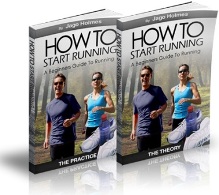Home | Blog | Contact Us | Order Page | About Us | Running For Beginners
|
||
How To Choose The Best Running Shoe For You
Do you know what your best running shoe is?
Do you realise that the way you place your feet down to the ground and the way you pick them up again has a massive relevance to the type of footwear you use to run in? Your best running shoe will have little to do with colour, make or design. Instead, the support, cushioning and fit are what will ultimately determine the type of shoes you buy.
Obviously you’re going to want to choose a pair that you like the look of as well, but the point I’m trying to make here is that this should be the least important factor for you to consider.
Your best running shoe isn’t likely to be the cheapest option either, you’re probably going to have to spend quite a bit of money to get a good pair. Although when you consider that this will be your biggest expense as a runner, it’s well worth the cost if you can afford it.
So here are the 3 factors you’ll need to think about when choosing the best running shoe for you:-
To find out the full story and how to do a clever little test yourself, go here now – Running for Beginners to get hold of ‘How To Start Running.’
Factor #1 - Find Out Your Foot Type
There are basically three different types of foot type - a normal arch, a high arch and a flat arch.
Factor #2 - Find Out Your Foot Action
The next factor to consider is pronation. Pronation basically means the action your foot takes as it strikes the ground.
Runners with normal arches are usually standard pronators. This means their feet hit the ground evenly without placing any undue stress on either the outside or inside of the foot.
Runners that have feet with high arches are often underpronators, which means the foot rolls outwards placing the body weight on to the outside of the foot instead of evenly over the whole foot.
Finally, runners with flat arches are usually classed as overpronators, which means their foot rolls inwards too much.
Whether you under or over pronate, your risks of getting injured are far higher if you don’t wear the best running shoe for you.
Factor #3 – Selecting Running Shoes To Fit Your Needs
Running shoes are classed in 3 ways: -
Cushioned Shoes
Designed for underpronators and toe runners, these running shoes don’t provide as much stability, but do have a more cushioned and softer underfoot.
Support shoes
Support shoes usually have both good cushioning and support features on the inner side of the shoe in order to limit excessive inward rolling of the foot. Neutral runners tend to wear this type of running shoe.
Control shoes
Control shoes are designed for more serious overpronators and heavier runners. Serious overpronators usually have a flatter foot as their arch collapses through the foot strike. Therefore these shoes are usually heavier, combining cushioning and more support in order to provide essential protection.
When choosing the best running shoe for you, remember to buy a bigger size than you need because when you run, your feet tend to swell slightly.
If you also buy your shoes towards the end of the day when you have been on your feet for a few hours, you will get a much truer measure as to the size you need, because after this time they will have swollen in size a little.
Finally a good idea is to take a pair of the running socks you usually wear with you because this will give you a more realistic idea as to your true running shoe size.
For a full breakdown of how to choose the best running shoe for you, pick up a copy of How To Start Running.’ You can find out more here – How To Start Running
| ||
All Rights Reserved © 2010 - 2011- New Image Fitness Ltd |
|
||||||||||
|
Privacy Policy | Articles
| Site Map | Affiliates | Terms and Conditions
|
Resources
| Blog


